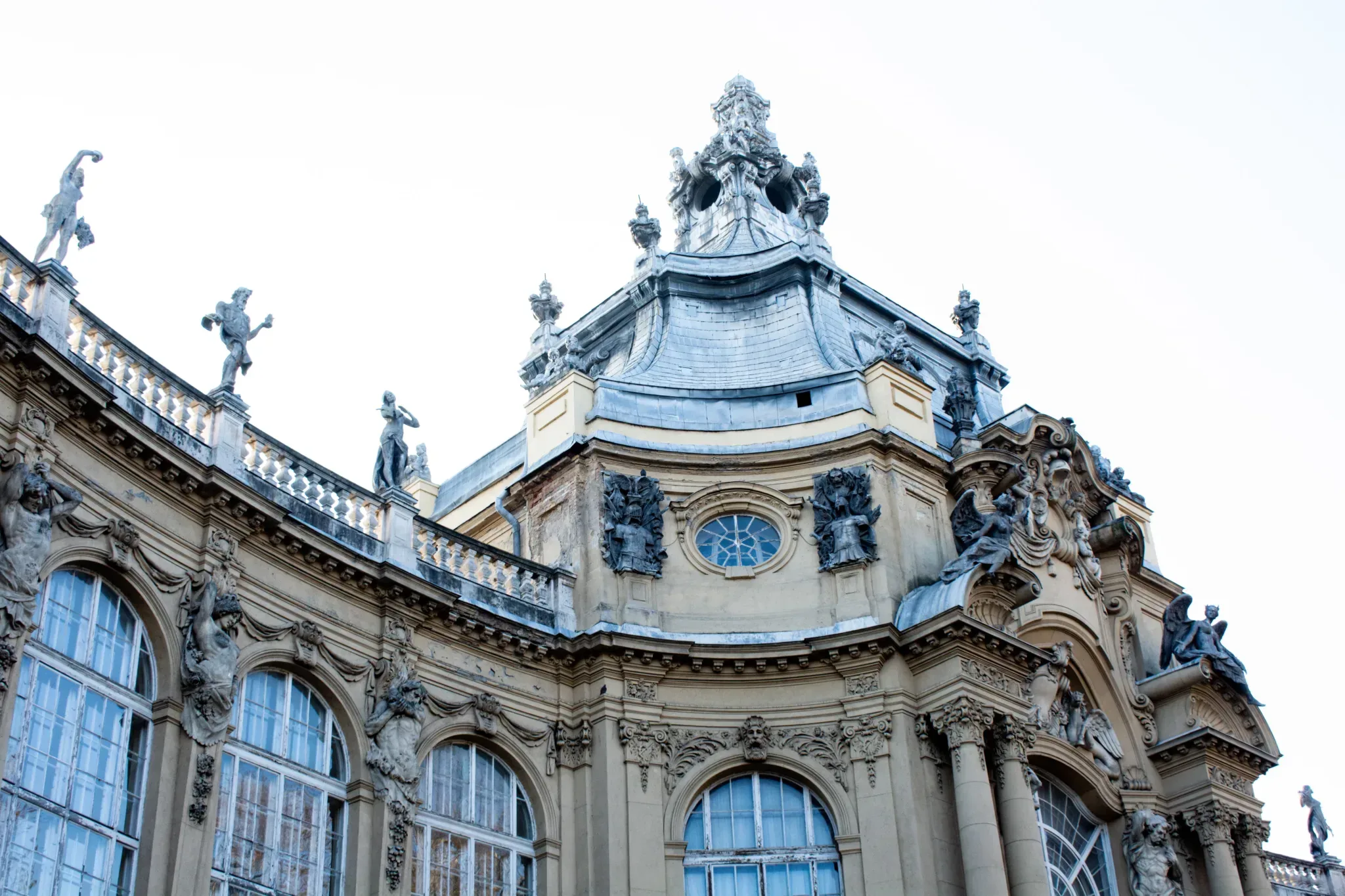Budapest was definitely a surprise I didn’t expect to experience in Hungary. From beautiful pubs, cat cafes, famous nightclubs, and hundreds of restaurants to try every Hungarian flavor, Budapest has much to offer its tourists.
Our trip to Budapest was sudden, as we decided to take advantage of the cheap round-trip plane tickets we found through Skyscanner, and the hostel where we stayed was equally economical.
We didn’t have time to learn much about Budapest before visiting, with my brother having only taken a few notes about the most famous tourist spots, like some clubs, cafes, and restaurants he found just before we flew.
Our trip lasted just four days, during which we saw almost all the well-known tourist spots in the city, took rides on rented bicycles on Margaret Island, went outside the city and visited a local village, and met other solo travellers with whom we had wonderful moments.
If you are preparing to travel to Budapest, then there are certain things you should know before visiting the Hungarian city—or at least, things we wish we had known.
1. There are ATMs with zero rates

One of the biggest mistakes people visiting Budapest make is exchanging their euros for Hungarian currency at ATMs or currency exchange offices with high rates (commissions). Although we were lucky, skipping the currency exchange at the airport where the rate is particularly high, we used whatever currency exchange service we found on our way.
However, on the penultimate day, we discovered that there are various ATMs in central parts of the city (and one near Fashion Street) that offer currency exchange with zero rates.
“I made the mistake of exchanging currency at the airport and got charged quite a bit,” said David, a Canadian we met at the hostel.
The same mistake seems to be made by many other visitors, as I saw in some discussions in various subreddits.
Therefore, instead of exchanging currency at the airport or some service, use the available ATMs with a 00.00% rate that you will find in various central parts of the city.
2. Don’t Use Greek Debit Cards for Transactions

For every transaction I made with my Piraeus Bank debit card, there were charges ranging from 7.3% to 7.48%, with the latter being the highest fee I encountered during my transactions in Budapest.
Meanwhile, with WISE, there was absolutely no additional charge, and there were quite a few travelers who used their Revolut cards.
Almost all stores allow you to pay contactless with your card or your mobile phone, although in some cases, we were asked to pay only in cash. In some places, like our hostel, they even accepted Euros, so you can always ask at the store what payment methods they offer.
Budapest is not cheap, unless you know where to go. Many YouTubers and bloggers present Budapest as an economical destination, but this is not entirely true.
- The cost at tourist spots is particularly high, with portions for one person at restaurants ranging from €20.00 to €25.00 up to €100.00 or more.
- The cost to enter most museums ranges from €10.00 to €50.00 per person, depending on the museum.
- The funicular costs €5.50 for a round trip.
- The Ferris wheel—also known as the “Eye of Budapest”—costs €15.00 and lasts about 15 minutes, but unfortunately, we didn’t get the chance to ride it.
- A boat ride on the beautiful lake of Buda and Pest will cost you around €25.00, but you can find more affordable companies.
- As for tickets for public transport, the metro, and trams, they cost from €0.80 to €2.00, depending on the destination.
- You can also get multi-hour or day tickets, which will be more economical if you plan to visit many places in the city.
With all this in mind, if you want to eat somewhere affordable, with portions costing €4.00, €5.00, and €8.00 respectively, then I would recommend visiting the Frici Papa restaurant. The waiter was particularly friendly, recommended various Hungarian dishes, and was very discreet when we asked him to explain what the people next to us were eating, as one of their dishes caught Jordan’s interest.
Budapest is vast, and while we walked a lot and covered a good number of kilometers, public transportation was a lifesaver in most cases, mainly due to the cold. If you are on a budget, I would suggest avoiding the tourist spots of the city and exploring the beautiful small streets of Budapest, where you will find many small shops to eat, buy souvenirs, and drink your beverages at significantly lower costs.
3. How to buy a ticket on the Budapest metro and tram

If there’s one thing that took us a bit of time to figure out, it was the metro tickets. While we were at the Budapest metro, a couple (Greeks, actually) asked us if we knew how to buy a ticket, but we looked at them with puzzled faces and told them we couldn’t make sense of it.
You see, at the Budapest metro, there is a small box at each station from which you can select the number of tickets you want to buy. Then, it asks you to complete the purchase through contactless payment.
Contactless payments via NFC work perfectly with Google Wallet, Apple Wallet, or apps like Wise and Revolut. However, if your device does not support contactless payments, you will face a significant problem, as we found no other way to buy tickets.
With all this in mind, when you use your phone to pay contactlessly, you will not receive a physical ticket. When stopped for inspection, you simply open the app you used to pay for the ticket, and they check if the payment for the tickets was indeed made from your smartphone.
Trams and buses work in the same way, with the difference that you will find a similar device inside the bus or tram. Once again, you select the number of tickets, complete the payment contactlessly with your phone, and in case of inspection, you just open the app you used to pay for the tickets so they can verify the purchase.
4. The Museum of Sweets & Selfies No. 2. | BUBBLES is Not as Advertised
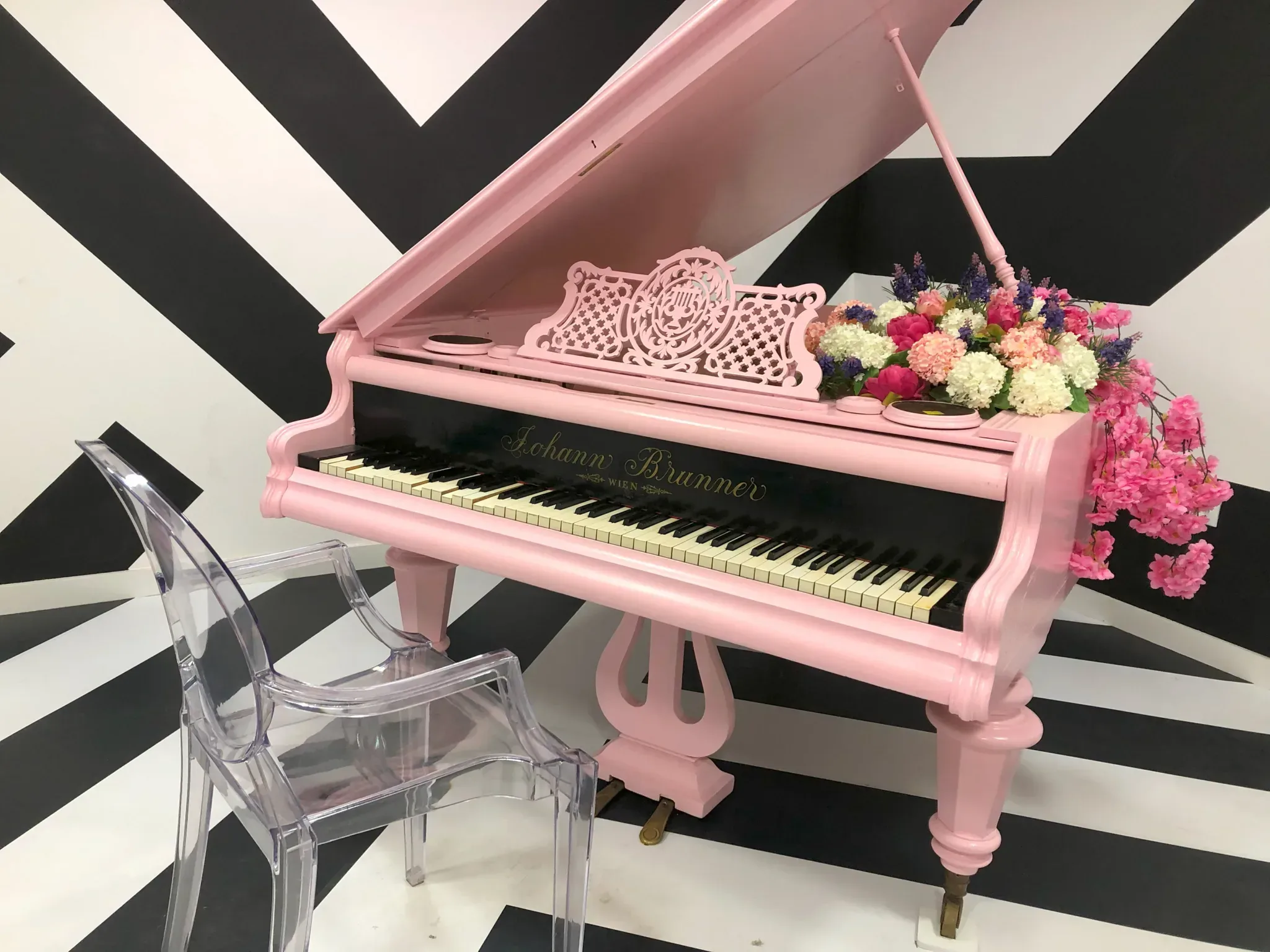
A museum should never be missing from your travel bucket list, no matter which city you visit. Museums are an excellent way to get to know the culture, art, and history of each city. However, this time we decided to go to a different kind of museum, one that is “designed” for visitors to take unique selfies (photos).
It is called “Museum of Sweets & Selfies No. 2. | BUBBLES” and from the photos, anyone would want to visit it. However, the reality is different, as we visited and almost asked for our money back.
As soon as you pass through the museum entrance—and after paying the lowest ticket price of €10.00 per person—you will find yourself in the first room, which, as you can see from the following photos, is completely uninteresting.


The first floor is just as uninteresting as the entrance, giving you the opportunity to take photos inside a Barbie box, next to (we didn’t attempt to get on) a bicycle, and under some illuminated letters that read “Happy Birthday” and “Bride to Be.”
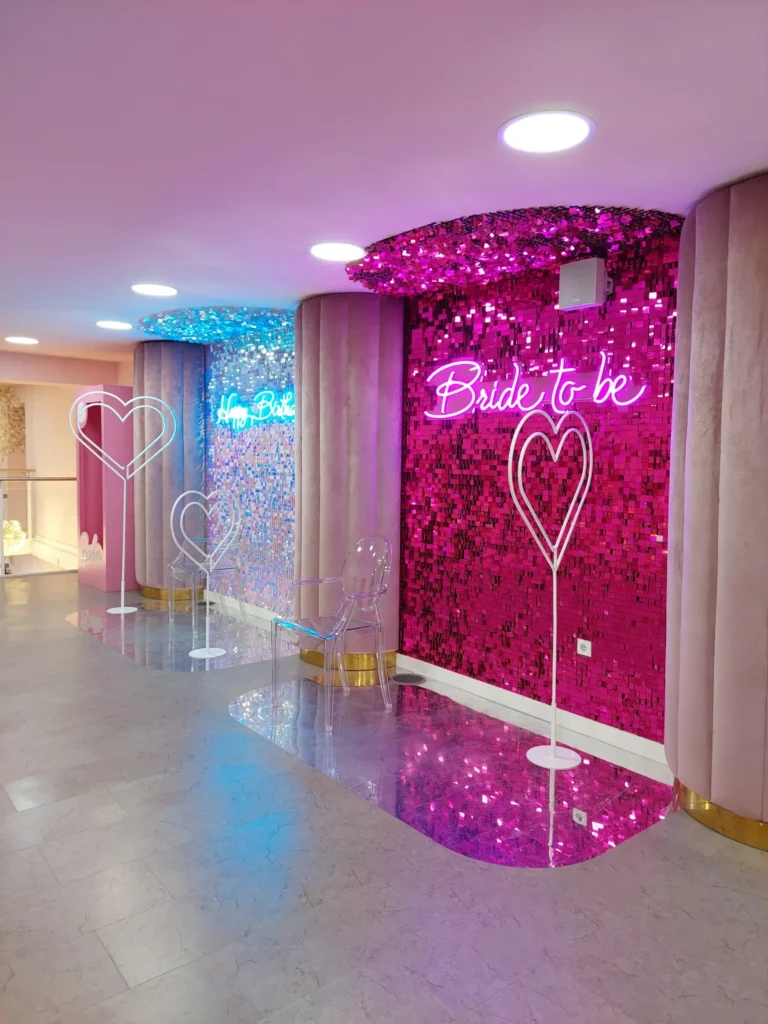
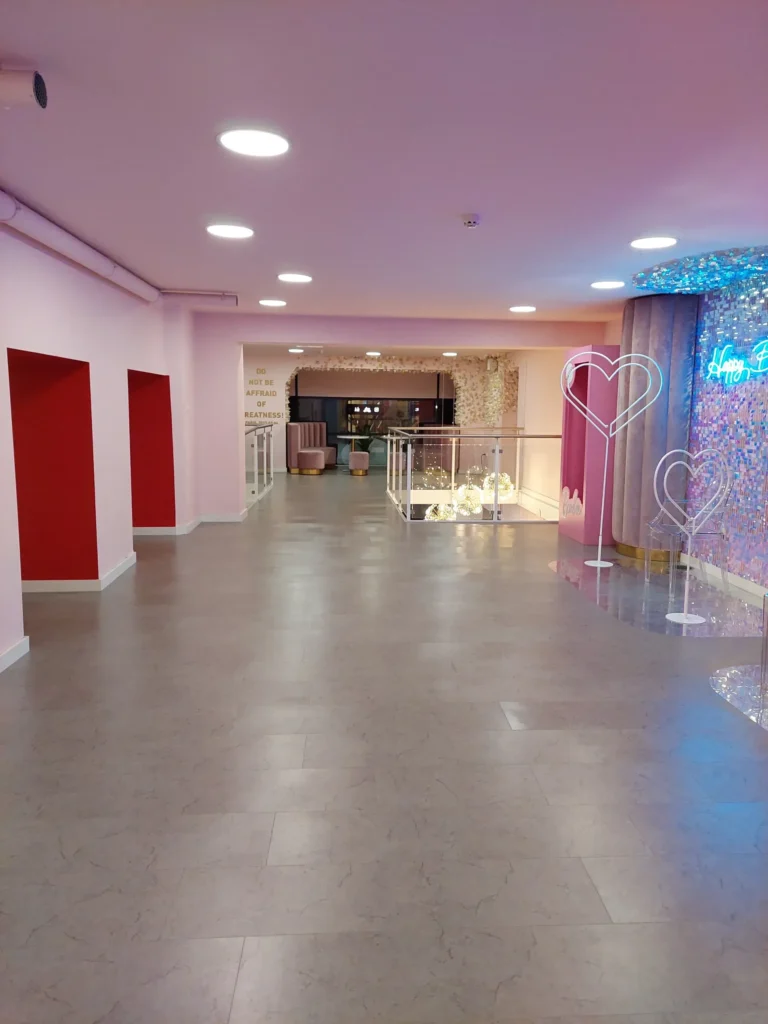
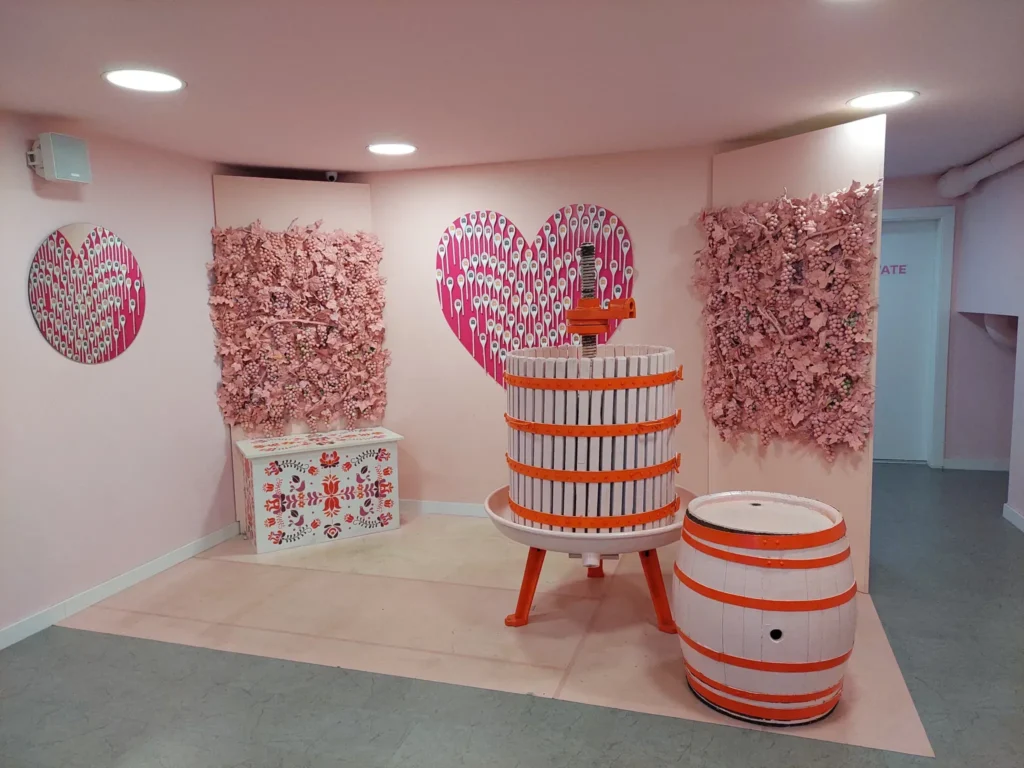
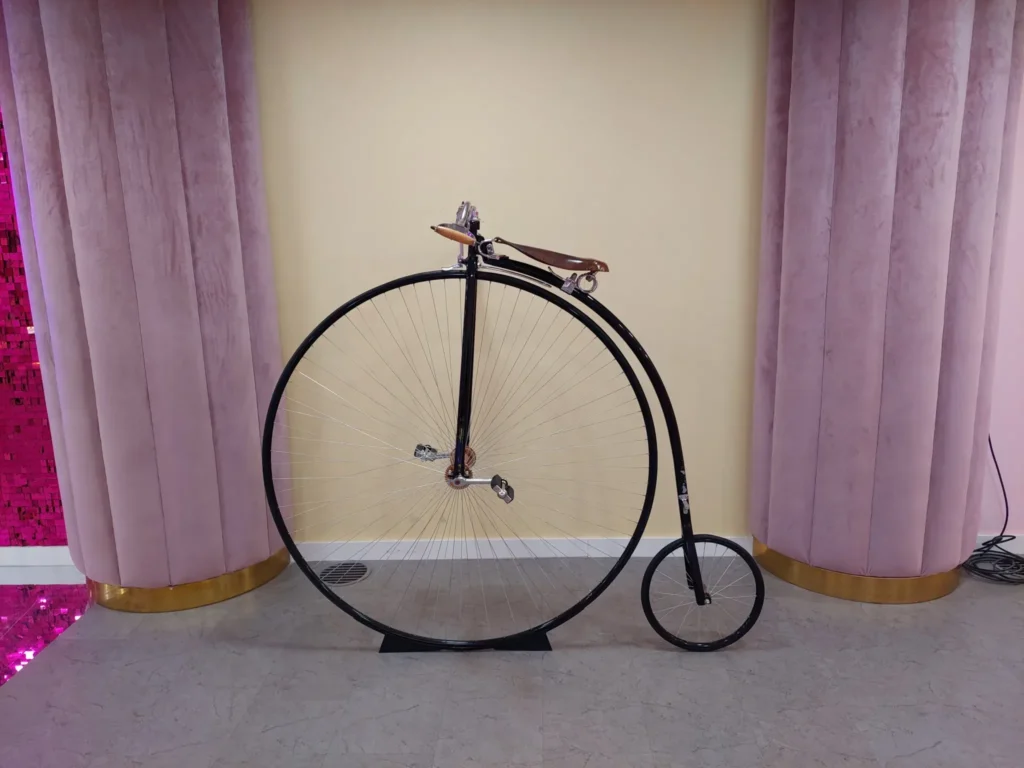
In a corner somewhere upstairs, there is also a slide that leads to the bubble pool, but you have to take off your shoes first as per the museum’s policy. The bubble pool is also accessible immediately after the museum entrance.

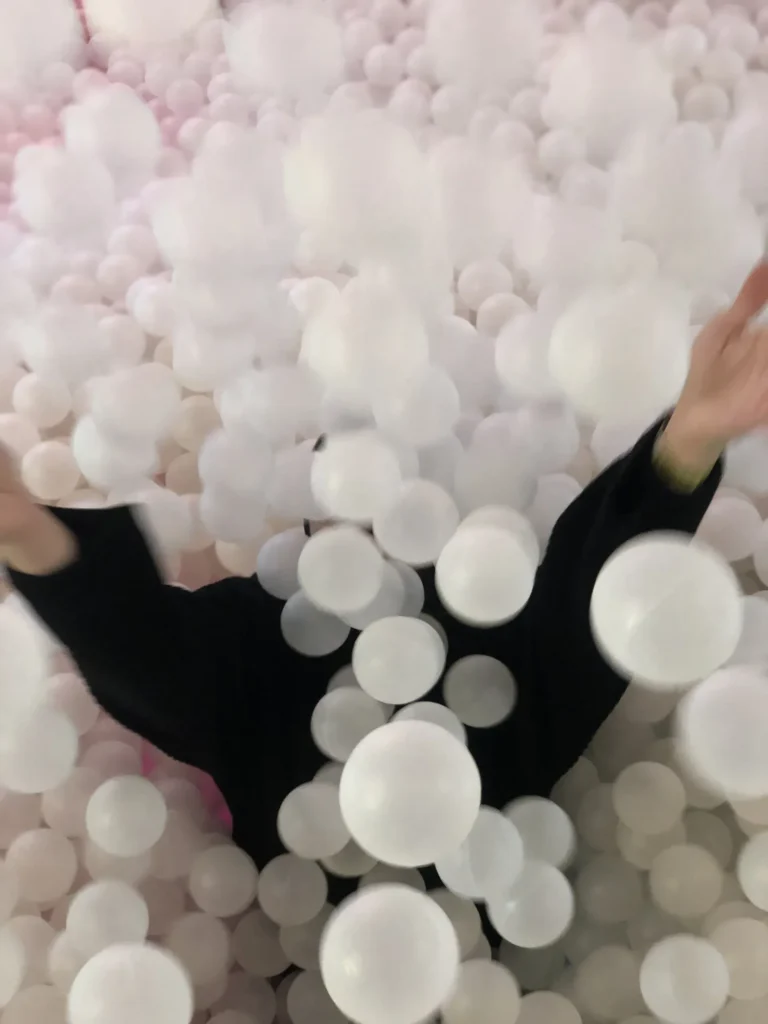
From the museum entrance, you will also find stairs leading to the lower floor, where there are only four spots to take some photos. In one, you can get on some moving horses. In the second, you can take a photo inside a bathtub filled with fake gold and silver coins.


In the third, you can take a selfie in front of a paper currency that resembles the dollar, in the fourth in front and under some wings, and finally, in front of a wall with 3D-style graphics and the moon with donuts.
In any case, although some of our photos turned out nice, it was not worth the money, and we definitely wouldn’t recommend anyone waste their time there. However, if you do want to visit, it is located at Rákóczi út 40.
5. Budapest is an especially cold city
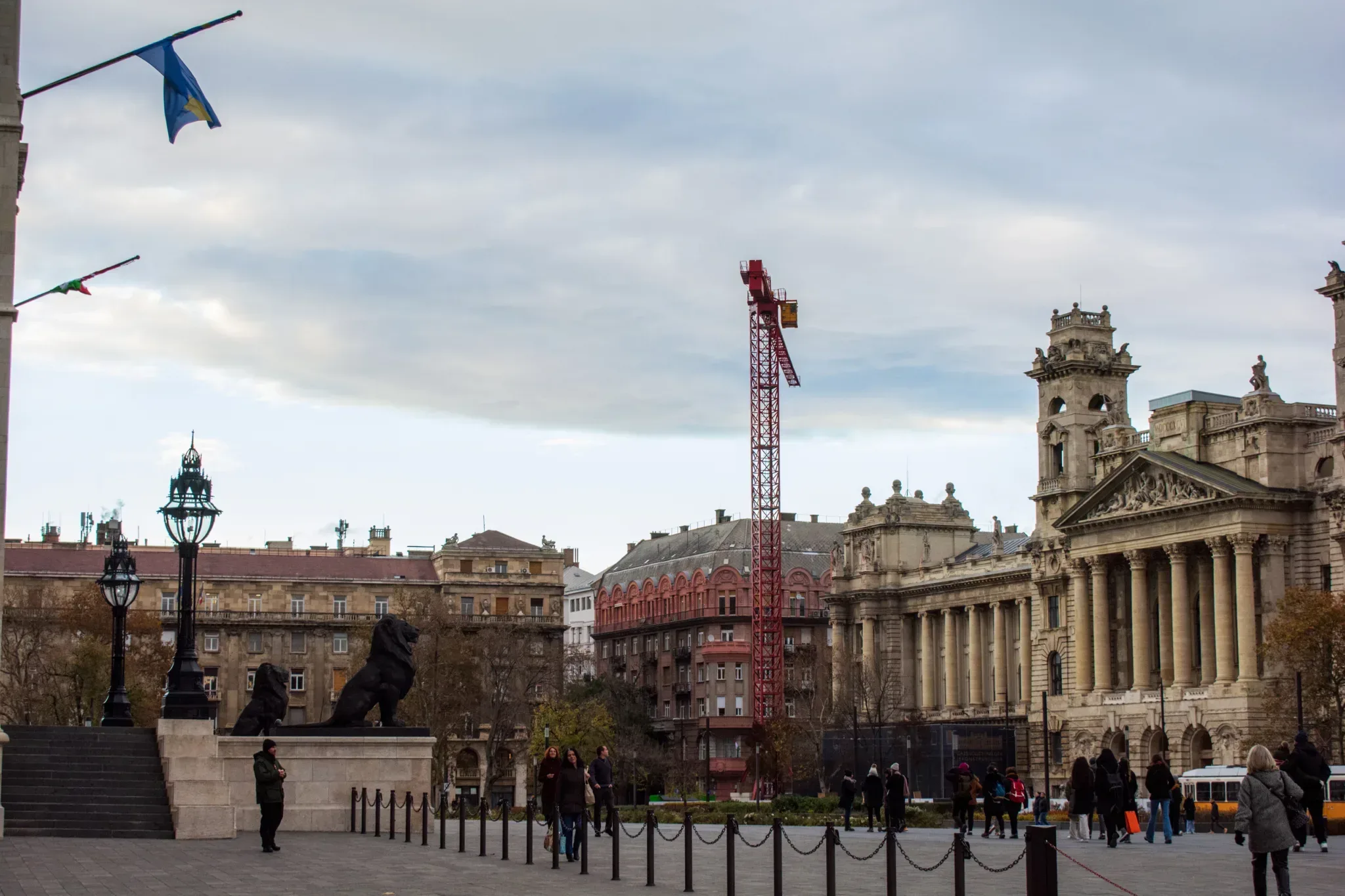
Our trip lasted from November 21st to November 24th, during which we constantly had temperatures between 1℃ and 5℃. However, the humidity literally penetrated our clothes and reached our bones. Every time I stepped out of a store, I would immediately feel chest pain a few minutes later from the tightness.
With all this in mind, bring warm clothes, thermal wear, and any other warm clothing you have. Don’t forget gloves, as well as comfortable shoes for extensive walking.

If I were to recommend a time to visit Budapest, it would definitely be in May, April, and early June. This way, you won’t experience too much cold or too much heat.
The weather in Budapest is also an important factor because there are many beautiful places where you will want to walk. These charming little streets were, after all, the great beauty of the city, making it so unique!
6. Goulash is the ultimate Hungarian traditional soup
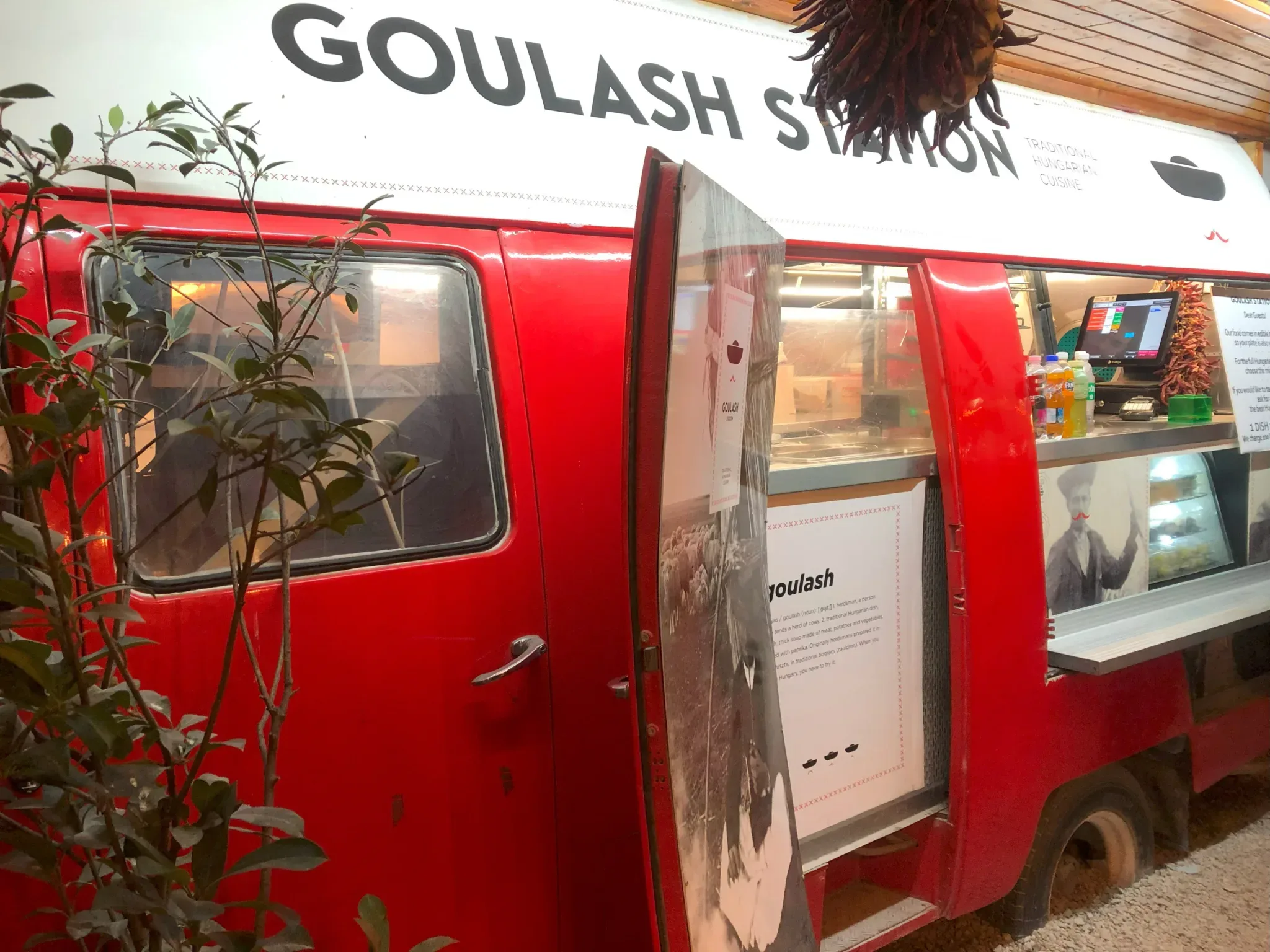
During our trip, we tried to find taverns that offered local Hungarian recipes. Although we often ended up eating burgers from McDonald’s as a quick option, we had the chance to try Goulash (English: Goulash | Hungarian: Gulyás), a traditional Hungarian soup with meat and vegetables seasoned with paprika and other spices.
Even though the soup doesn’t look like anything special from the picture, it was actually very tasty and enjoyable, to the point where I added more spicy paprika sauce than I should have.
You see, when the restaurant’s waitress helped me choose a traditional soup, she told me to never put the spicy sauce on the bread, but to take it with a spoon and add it to the soup. This, according to her, was the traditional way to eat soup in Hungary.
And so I did, but only after enjoying 80% of my dish without the spicy sauce, fearing it might ruin my meal. I admit that I wasn’t thrilled with their spicy paprika sauce, but I wasn’t disappointed either.
The dish cost about €5.00, an excellent price but only for a start; otherwise, it would leave you hungry. There were also other soups that came in smaller portions – usually in large tea cups – which were great as something light before the main meal.
Editor’s Note: Honestly, I have no idea where the soup photos went. Unless I put them on a silver alert, I doubt they’ll be found again.
7. Avoid food in tourist places
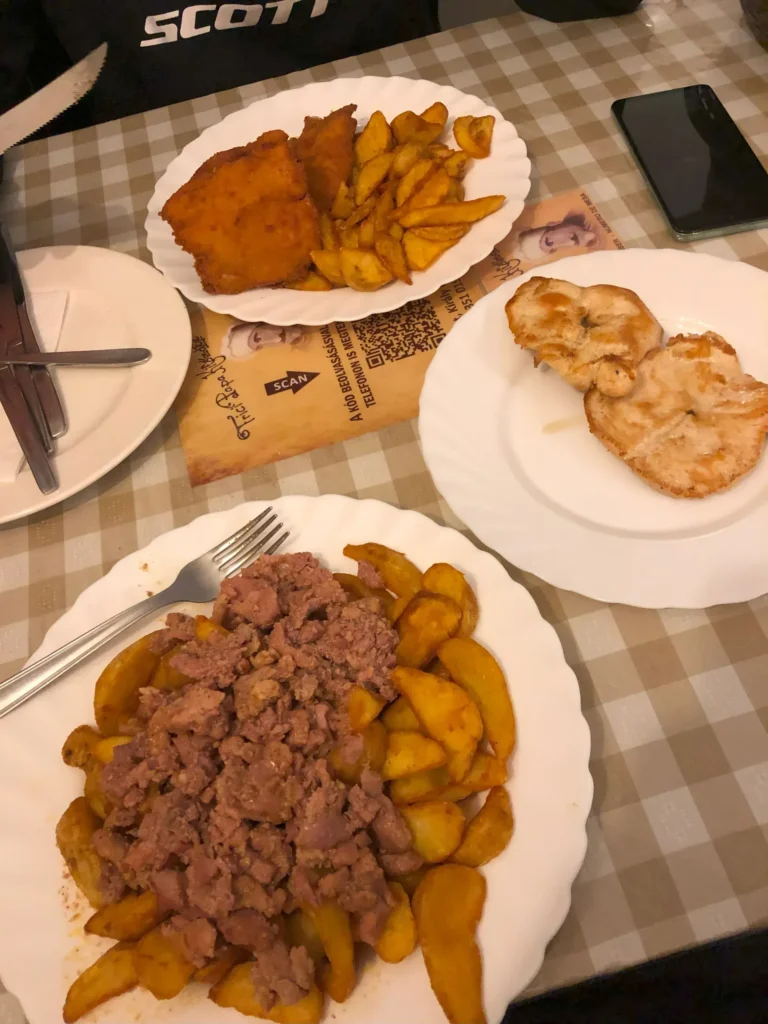
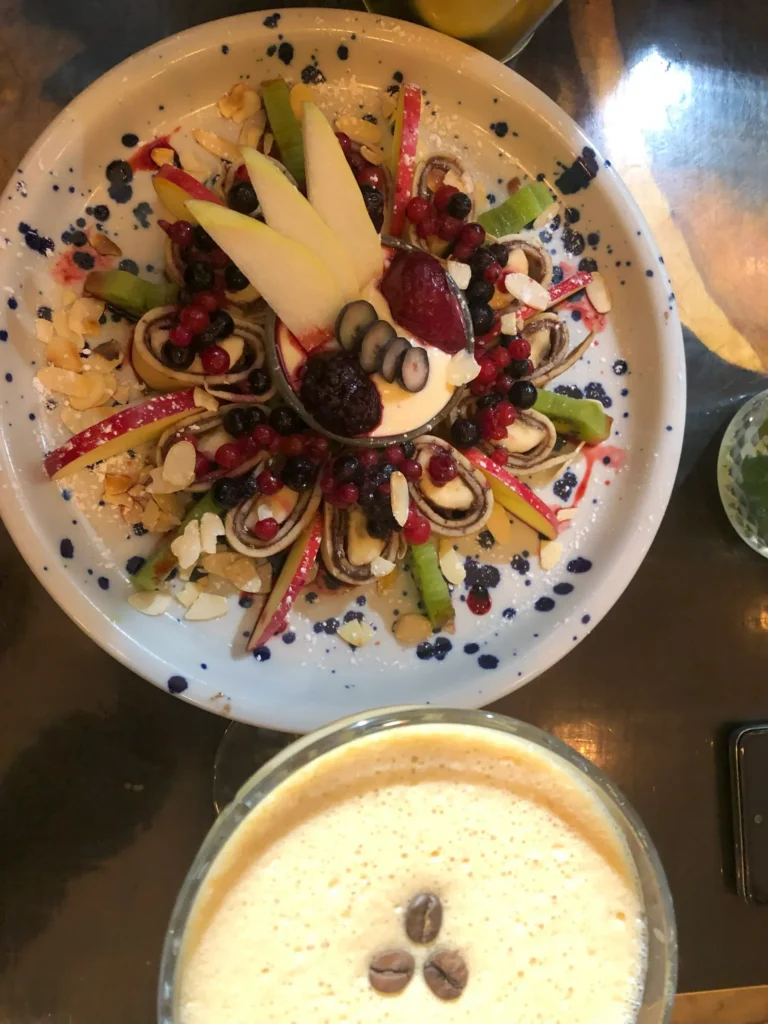

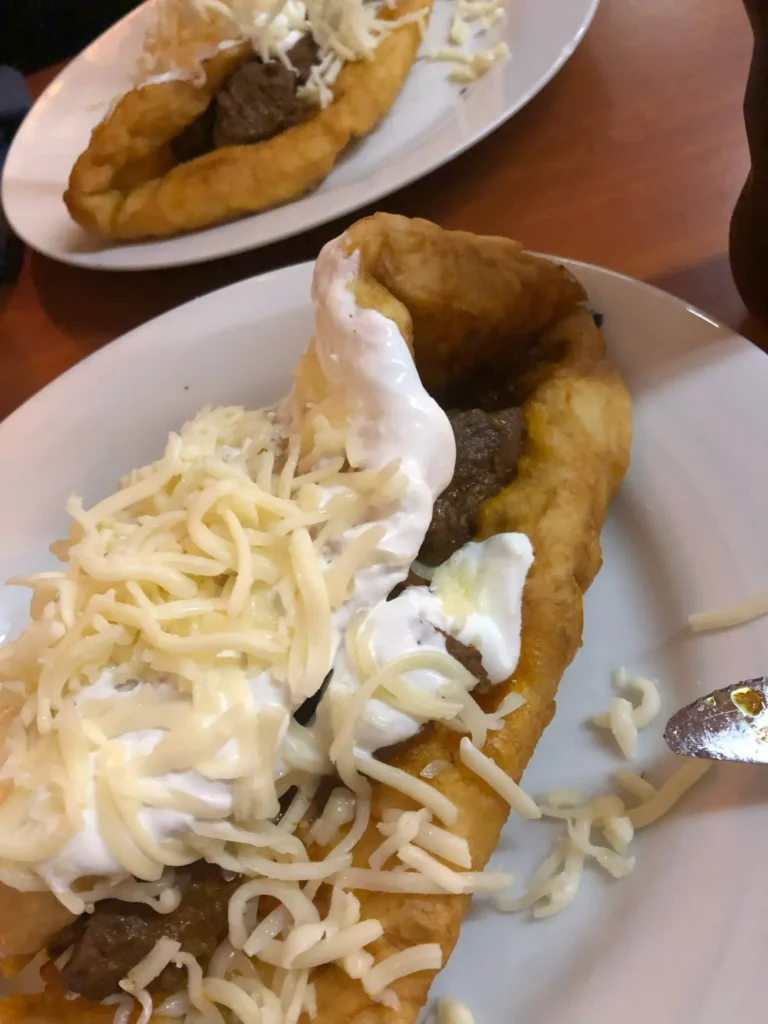
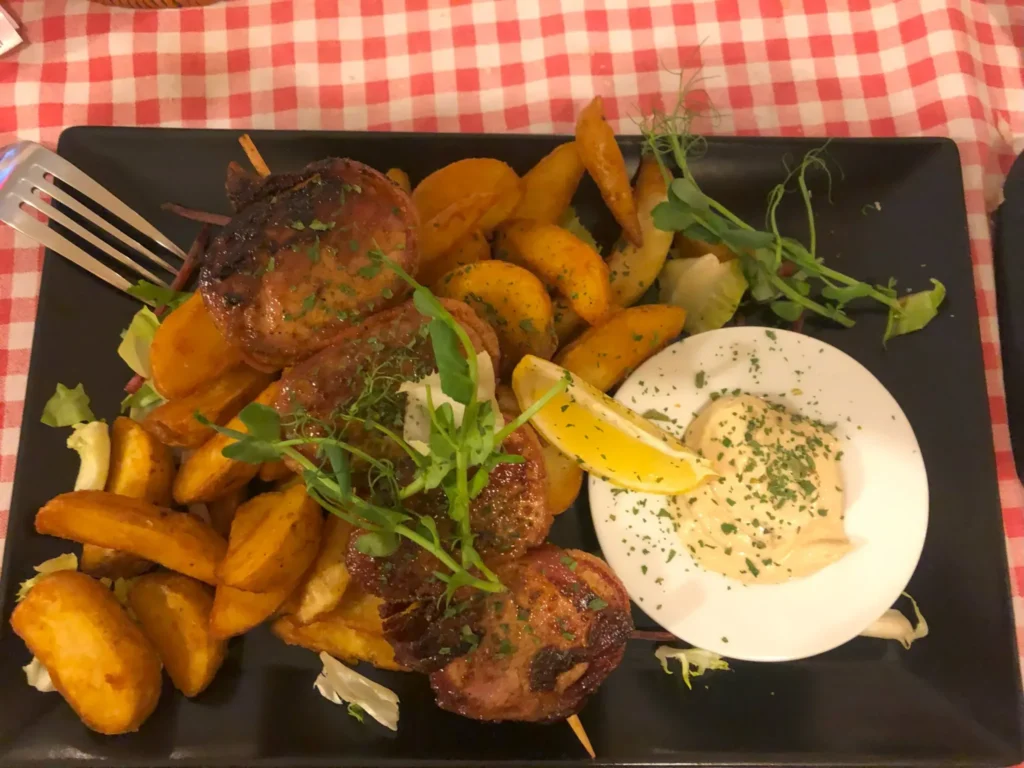
If you want to eat in Budapest without spending a fortune, as I mentioned earlier, you should avoid restaurants, canteens, and anything near tourist spots and famous places in Budapest. Especially on streets like Fashion Street, everything you look at is extremely overpriced, especially when compared to the average Greek salary.
The problem with tourist places, however, is not just the cost, but also the large number of tourists rushing to get a table. In many restaurants and well-known cafes in tourist areas of the city, reservations are required, otherwise, you might wait from a few to several minutes in line.
A good example was the New York Cafe we wanted to visit, which had such a long queue outside that we didn’t want to waste our time – and obviously endure the cold. In the quieter parts of Budapest, where few tourists walk, there are small, beautiful shops with much to offer. From good local food to Asian or Greek cuisine, you’ll find everything in this enchanting capital.
The less touristy places also tend to offer larger portions of food at a lower cost and more quality and homemade food, as long as you are willing to invest a little time in further exploring the narrow streets of the city.
8. Budapest is better with good company

What made Budapest so unique from our previous destinations was not only its beauty and architecture, two things that equally impressed us, but the wonderful company we had created together with six other people we met through the HostelWorlds app.
This particular app allows you to make online bookings at hundreds of hostels around the world, offering chats through which guests can talk to everyone staying in the same hostel or room. This way, many solo travelers seek out people to explore the city together, go to group activities, for food or drinks, and much more.
Whether you are a solo traveler planning to visit Budapest alone, or even a group looking for other people to have fun with, Hostelworlds is definitely an app worth using for every trip.
9. The beauty of Hungary in the villages of Budapest

If there’s one thing my brother says, and I agree every time no matter what city we are in, it’s to visit one of its villages. So, my little brother starts the search and finds the most beautiful village he can.
We continued our tradition in Budapest and took the train to the village of Szentendre. The journey lasted about 40 minutes, and the train dropped us off right outside the village.
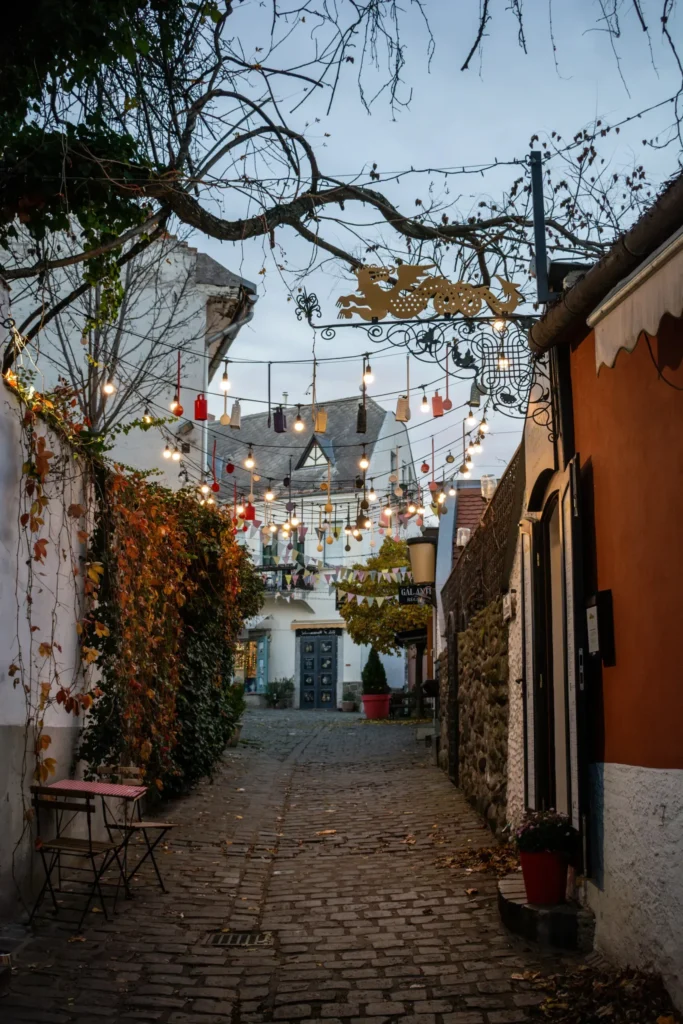
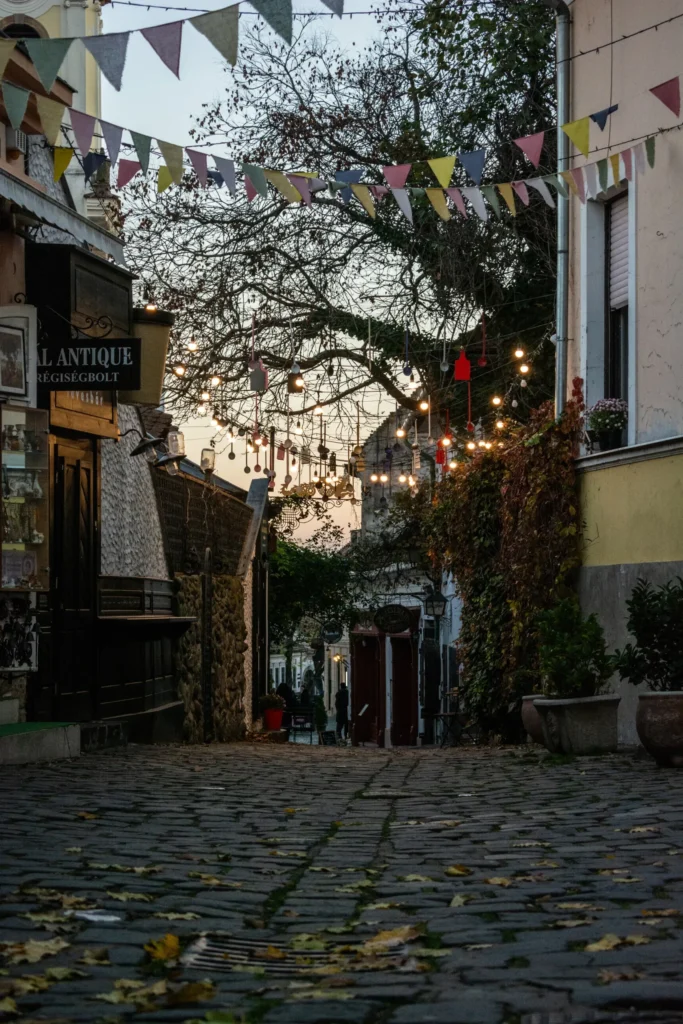
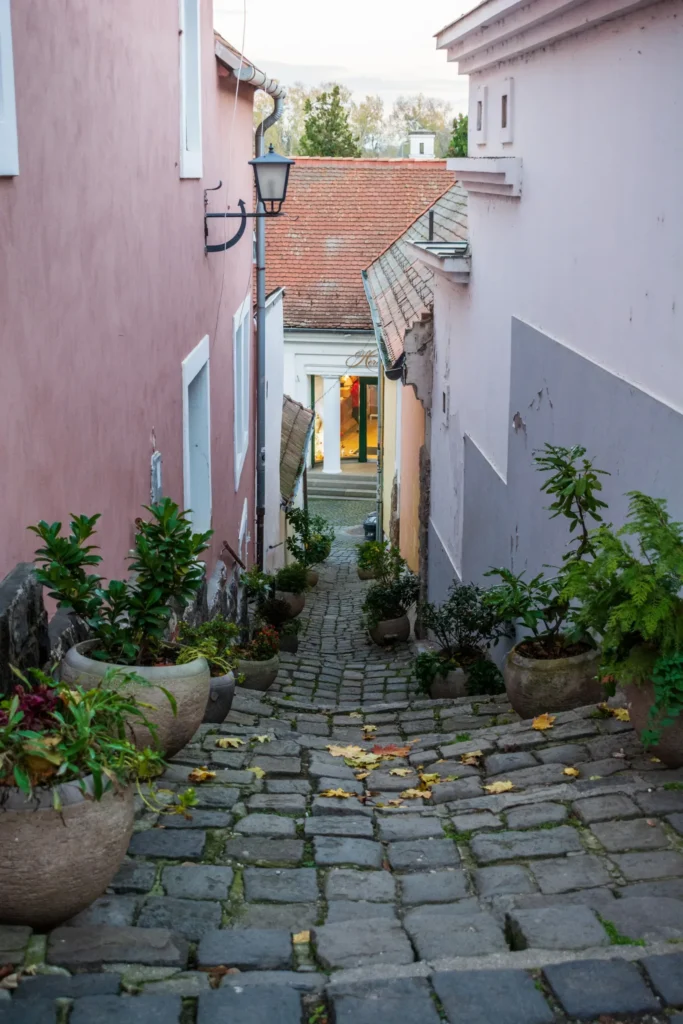
Szentendre is a village with colorful houses, beautiful narrow streets full of fallen leaves, the Danube lake where you can enjoy your meal or coffee, and several small tourist shops where you can buy various souvenirs.
Fun Fact: Szentendre is often called “The Artists’ Village” because it has attracted many painters, sculptors, writers, and musicians since the early 20th century.
However, the village was quite expensive, with restaurants having prices starting from €18.00 to €20.00 per portion. Finally, we sat down at the Kereskedőház Étterem restaurant where we tried local recipes, such as the Goulash soup I mentioned earlier, stuffed cabbage, etc.
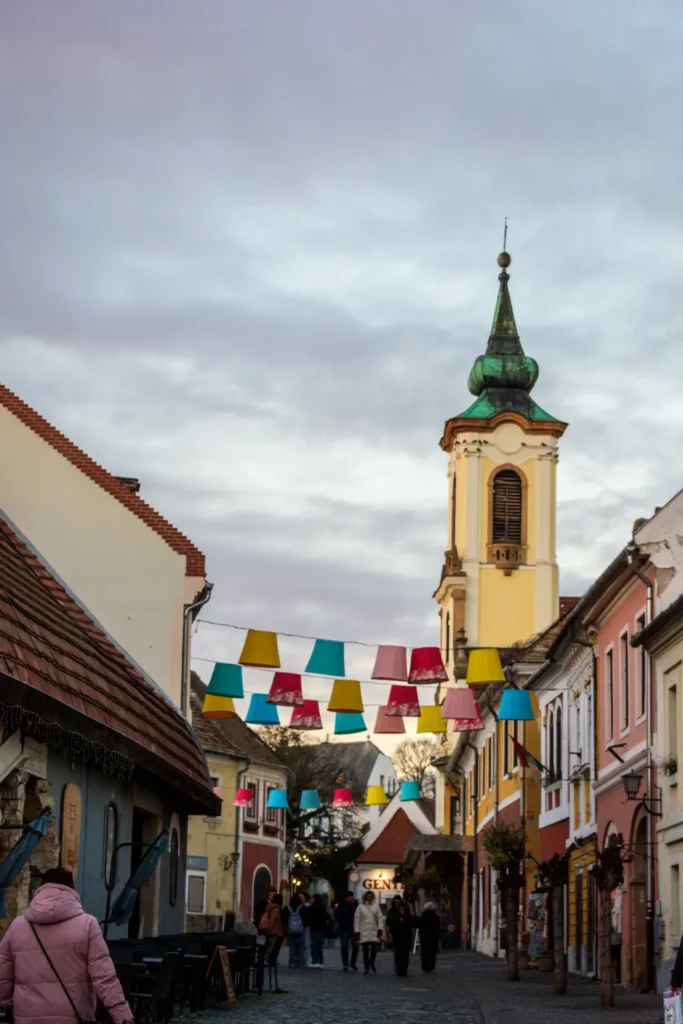

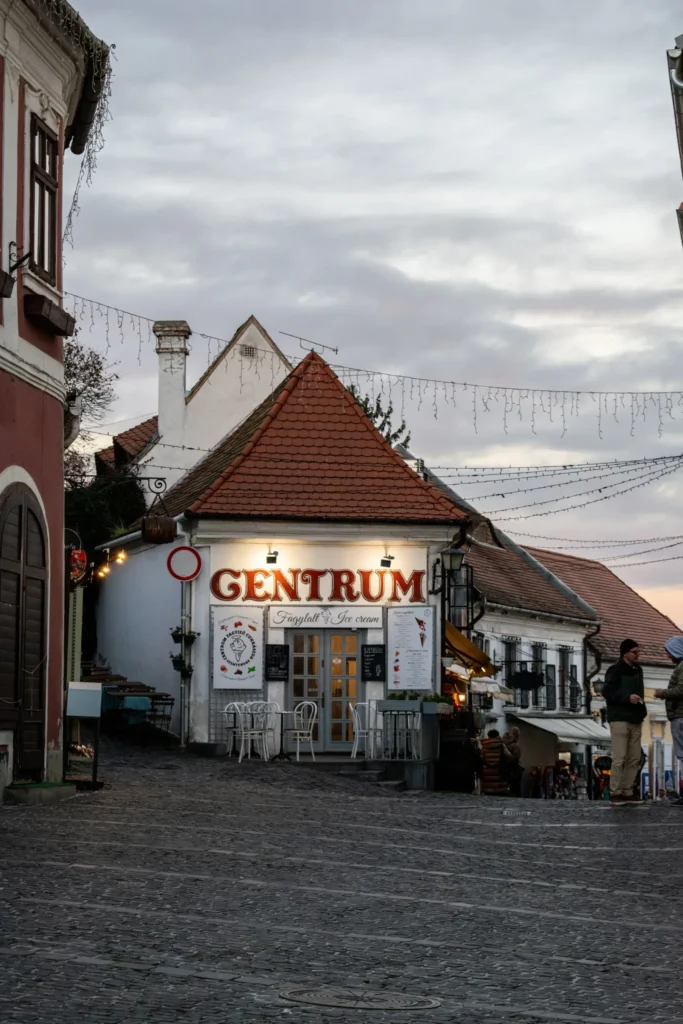
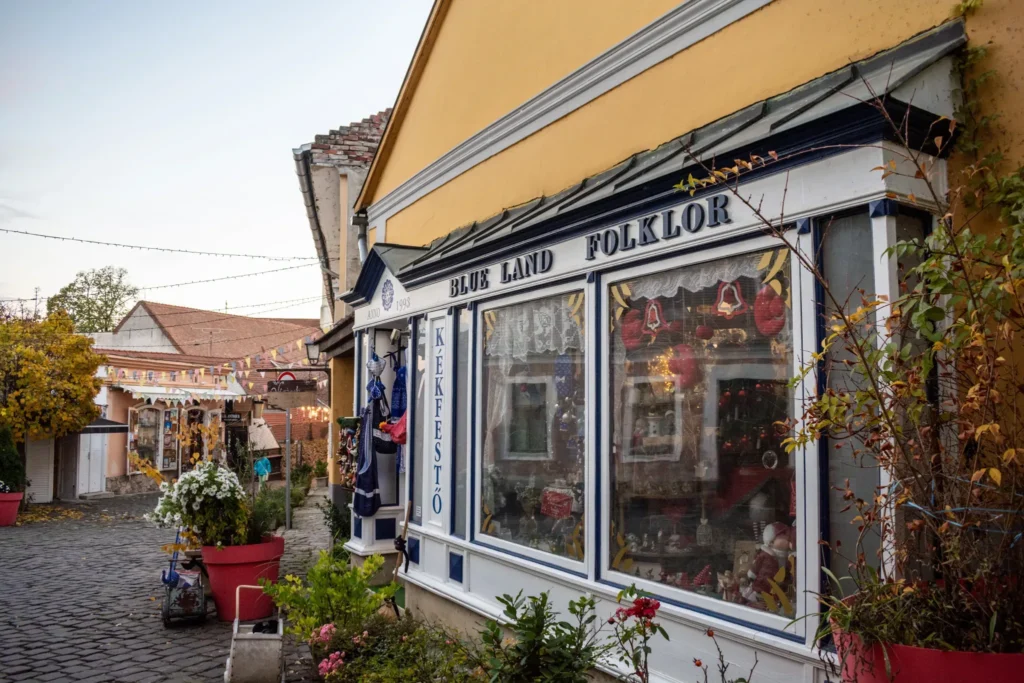
The woman who welcomed us, took our order, was particularly kind, suggested several recipes, and showed us exactly how the Hungarians eat. You know, what you don’t do is put the sauce on the bread, but directly into the soup.

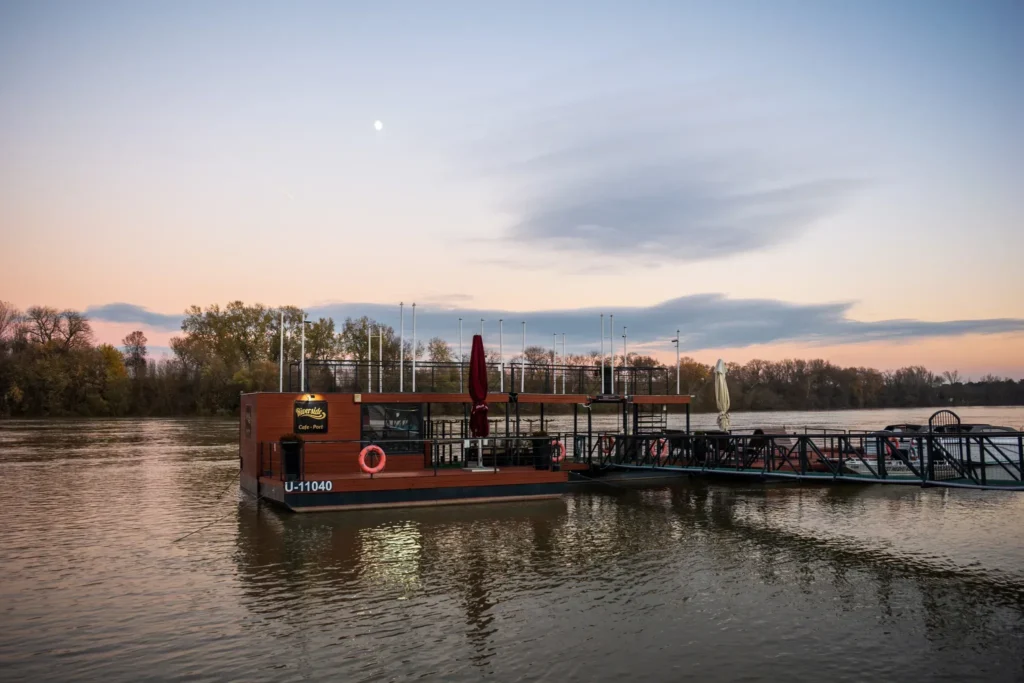

10. Let the Forralt Bor (mulled wine) warm up your walks
As I waited for my brother to come out of the Szechenyi Baths, which for health reasons I couldn’t enjoy or see up close, I started solo walks in the surrounding areas and quickly found myself outside the City Park Ice Rink, the city’s largest ice rink and one of the oldest and largest in Europe. Meanwhile, it didn’t seem so big to me, but perhaps ice rinks aren’t as big as I thought.
The ice rink overlooks Vajdahunyad Castle, while just outside you’ll come across hundreds of small vendors offering the delicious Forralt Bor (known as spiced wine), a kind of hot wine sold at hundreds of points throughout Budapest – and it’s as tasty as it looks from the video!
It’s a hot wine usually made with red wine, various spices, and sometimes raisins and fruits, in large tanks, barrels, or large pots. The seller keeps it warm throughout and with a large ladle fills the plastic or paper cups, which he then hands to you.
The truth is, besides its tastiness, because it was particularly tasty, it also kept my hands warm, so when it was finished, obviously, I got a second one.
When my brother came out of the Szechenyi Baths and came to find me, I quickly took him to get one too, and for me to get another one. The first thing I remember him saying was, “Hey man, this doesn’t have alcohol in it, it’s like juice.” I smiled, didn’t speak, and a little later, as we got on the tram, the first thing he said to me was, “Hey man, this hit me!”
We laughed, but make sure you don’t treat it like juice, because Budapest’s beloved hot wine tends to hit last.
Contrary to other European countries, Budapest was a big surprise for both of us. It’s a beautiful city, ideal for all ages, with hundreds of activities, museums, parks, castles, ruin bars, and architecture that keeps your eyes open throughout.
Have you ever visited Budapest? If so, what was your experience like and what did you like most about your trip? I’ll be happy to hear about your experiences, as well as the mistakes you made the first time in the Hungarian capital, in the comments at the end of the article!

